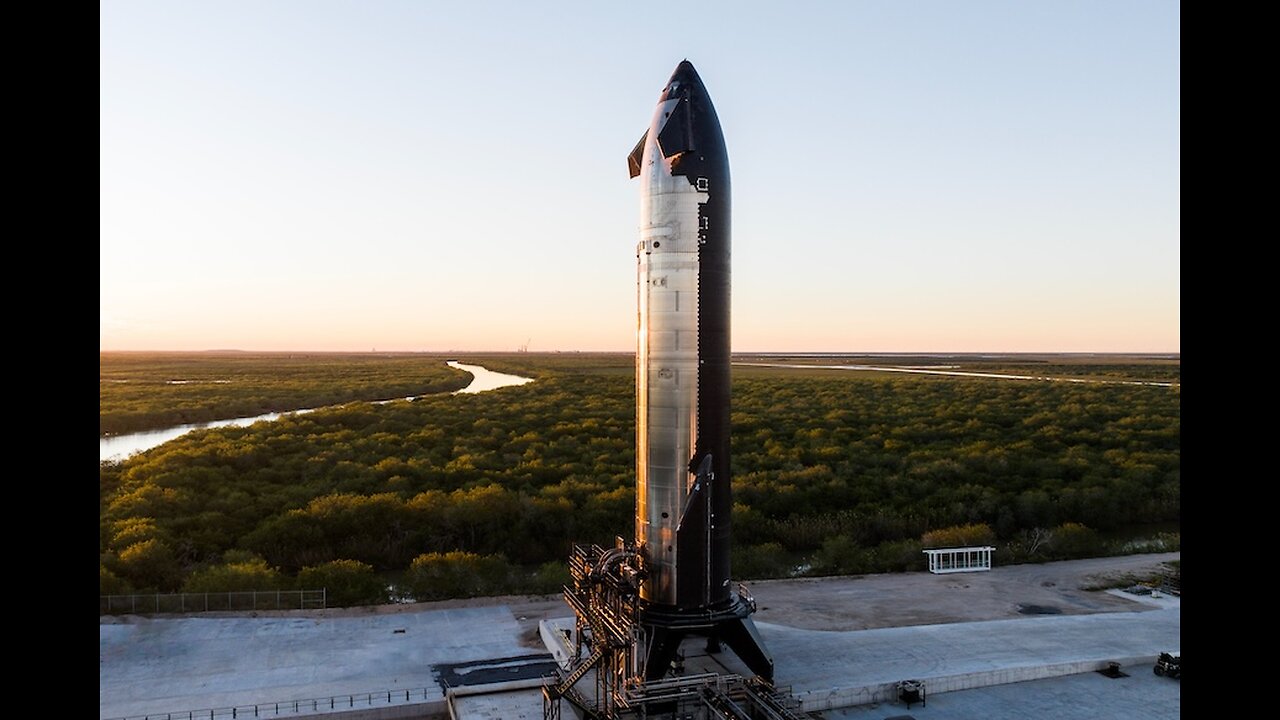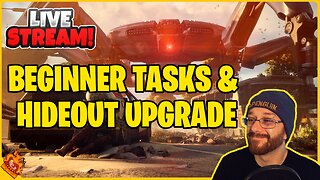Premium Only Content

Starship Flight 7 - Starbase Texas
The seventh flight test of Starship is preparing to launch Thursday, January 16. The 60-minute launch window will open at 4:00 p.m. CT. The upcoming flight test will launch a new generation ship with significant upgrades, attempt Starship’s first payload deployment test, fly multiple reentry experiments geared towards ship catch and reuse, and launch and return the Super Heavy booster. A block of planned upgrades to the Starship upper stage will debut on this flight test, bringing major improvements to reliability and performance. The vehicle’s forward flaps have been reduced in size and shifted towards the vehicle tip and away from the heat shield, significantly reducing their exposure to reentry heating while simplifying the underlying mechanisms and protective tiling. Redesigns to the propulsion system, including a 25 percent increase in propellant volume, the vacuum jacketing of feedlines, a new fuel feedline system for the vehicle’s Raptor vacuum engines, and an improved propulsion avionics module controlling vehicle valves and reading sensors, all add additional vehicle performance and the ability to fly longer missions. The ship’s heat shield will also use the latest generation tiles and includes a backup layer to protect from missing or damaged tiles. The vehicle’s avionics underwent a complete redesign, adding additional capability and redundancy for increasingly complex missions like propellant transfer and ship return to launch site. Avionics upgrades include a more powerful flight computer, integrated antennas which combine Starlink, GNSS, and backup RF communication functions into each unit, redesigned inertial navigation and star tracking sensors, integrated smart batteries and power units that distribute data and 2.7MW of power across the ship to 24 high-voltage actuators, and an increase to more than 30 vehicle cameras giving engineers insight into hardware performance across the vehicle during flight. With Starlink, the vehicle is capable of streaming more than 120 Mbps of real-time high-definition video and telemetry in every phase of flight, providing invaluable engineering data to rapidly iterate across all systems. While in space, Starship will deploy 10 Starlink simulators, similar in size and weight to next-generation Starlink satellites as the first exercise of a satellite deploy mission. The Starlink simulators will be on the same suborbital trajectory as Starship, with splashdown targeted in the Indian Ocean. A relight of a single Raptor engine while in space is also planned. The flight test will include several experiments focused on ship return to launch site and catch. On Starship’s upper stage, a significant number of tiles will be removed to stress-test vulnerable areas across the vehicle. Multiple metallic tile options, including one with active cooling, will test alternative materials for protecting Starship during reentry. On the sides of the vehicle, non-structural versions of ship catch fittings are installed to test the fittings’ thermal performance, along with a smoothed and tapered edge of the tile line to address hot spots observed during reentry on Starship’s sixth flight test. The ship’s reentry profile is being designed to intentionally stress the structural limits of the flaps while at the point of maximum entry dynamic pressure. Finally, several radar sensors will be tested on the tower chopsticks with the goal of increasing the accuracy when measuring distances between the chopsticks and a returning vehicle during catch. The Super Heavy booster will utilize flight proven hardware for the first time, reusing a Raptor engine from the booster launched and returned on Starship’s fifth flight test. Hardware upgrades to the launch and catch tower will increase reliability for booster catch, including protections to the sensors on the tower chopsticks that were damaged at launch and resulted in the booster offshore divert on Starship’s previous flight test. Distinct vehicle and pad criteria must be met prior to a return and catch of the Super Heavy booster, requiring healthy systems on the booster and tower and a final manual command from the mission’s Flight Director. If this command is not sent prior to the completion of the boostback burn, or if automated health checks show unacceptable conditions with Super Heavy or the tower, the booster will default to a trajectory that takes it to a landing burn and soft splashdown in the Gulf of Mexico. We accept no compromises when it comes to ensuring the safety of the public and our team, and the return will only take place if conditions are right. The returning booster will slow down from supersonic speeds, resulting in audible sonic booms in the area around the landing zone. Generally, the only impact to those in the surrounding area of a sonic boom is the brief thunder-like noise with variables like weather and distance from the return site determining the magnitude experienced by observers.
-
 49:47
49:47
Brad Owen Poker
22 hours agoI Get My First BIIGGG Win! $25,000+ Buy-in! HORSE Championship! Don’t Miss! Poker Vlog Ep 324
10.5K1 -
 5:14:08
5:14:08
BBQPenguin_
7 hours agoARC RAIDERS LIVE: High-Stakes Extraction & PvPvE! (First Run)
8.68K1 -
 9:53
9:53
Rethinking the Dollar
22 hours agoWhen Detroit Bleeds, America Suffer! Layoffs Have Begun
14.6K25 -
 18:36
18:36
Clownfish TV
1 day agoYouTube Just NERFED YouTube Gaming... | Clownfish TV
11.3K30 -
 10:26
10:26
Silver Dragons
19 hours agoSilver is TAKING OFF Around the World
11.4K4 -
 1:36
1:36
From Zero → Viral with AI
1 day ago $1.96 earnedAI in Content Creation & Discovery – The New Era of Marketing
12.2K1 -
 1:20:10
1:20:10
FreshandFit
13 hours agoMiami Halloween Street Debate
216K117 -
 2:06:16
2:06:16
TimcastIRL
17 hours agoTrump Calls For NUCLEAR OPTION, END Filibuster Over Food Stamp Crisis | Timcast IRL
226K199 -
 3:58:54
3:58:54
SavageJayGatsby
14 hours ago🎃 Friend Friday – Halloween Edition! 👻🕷️
60.1K4 -
 16:16
16:16
Robbi On The Record
12 days ago $22.58 earnedThe Dark History of Halloween | What You Should Know
73.7K71